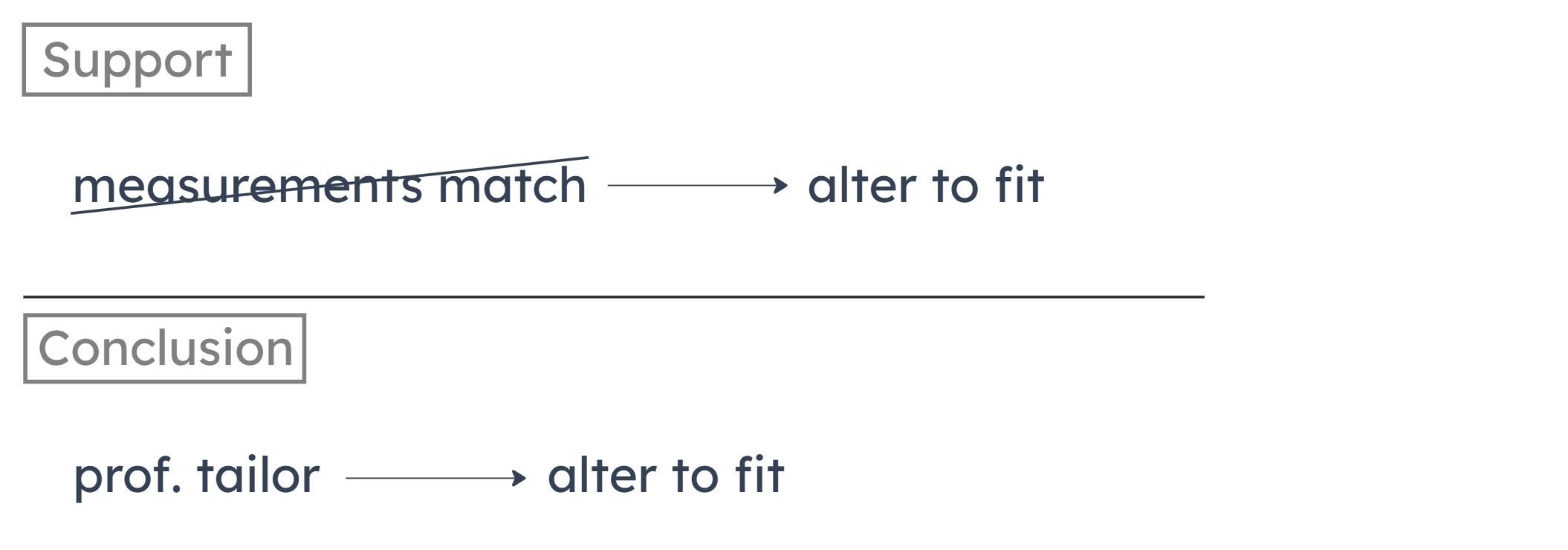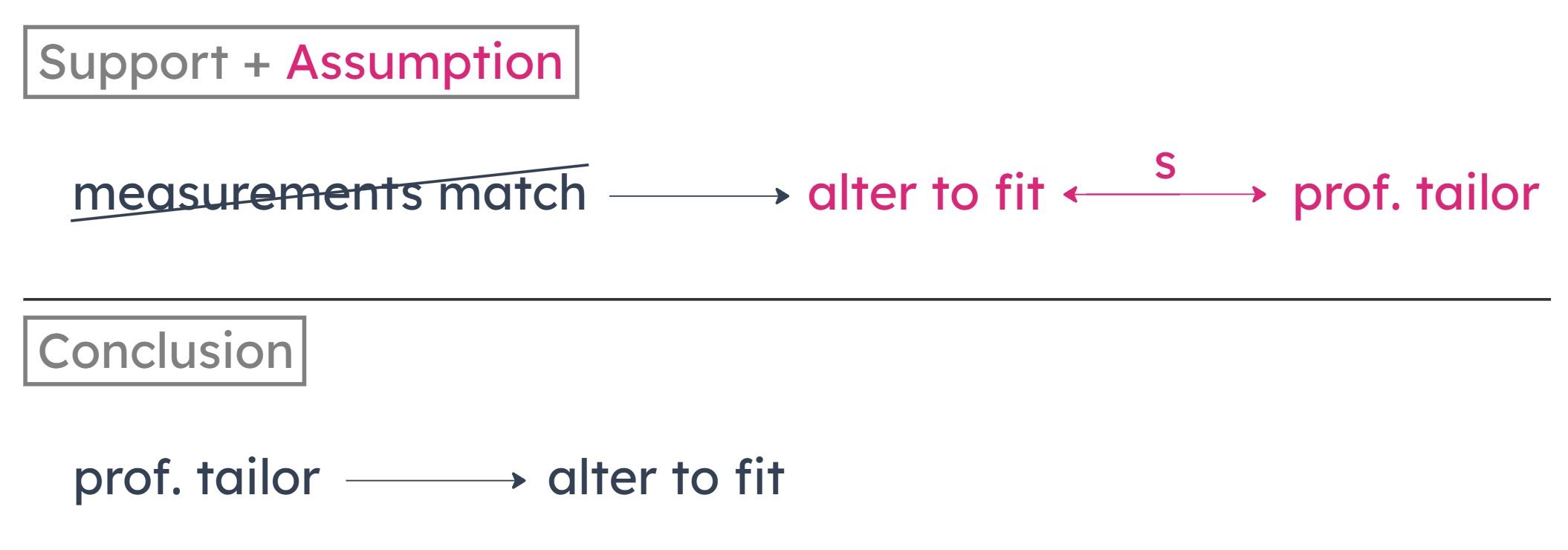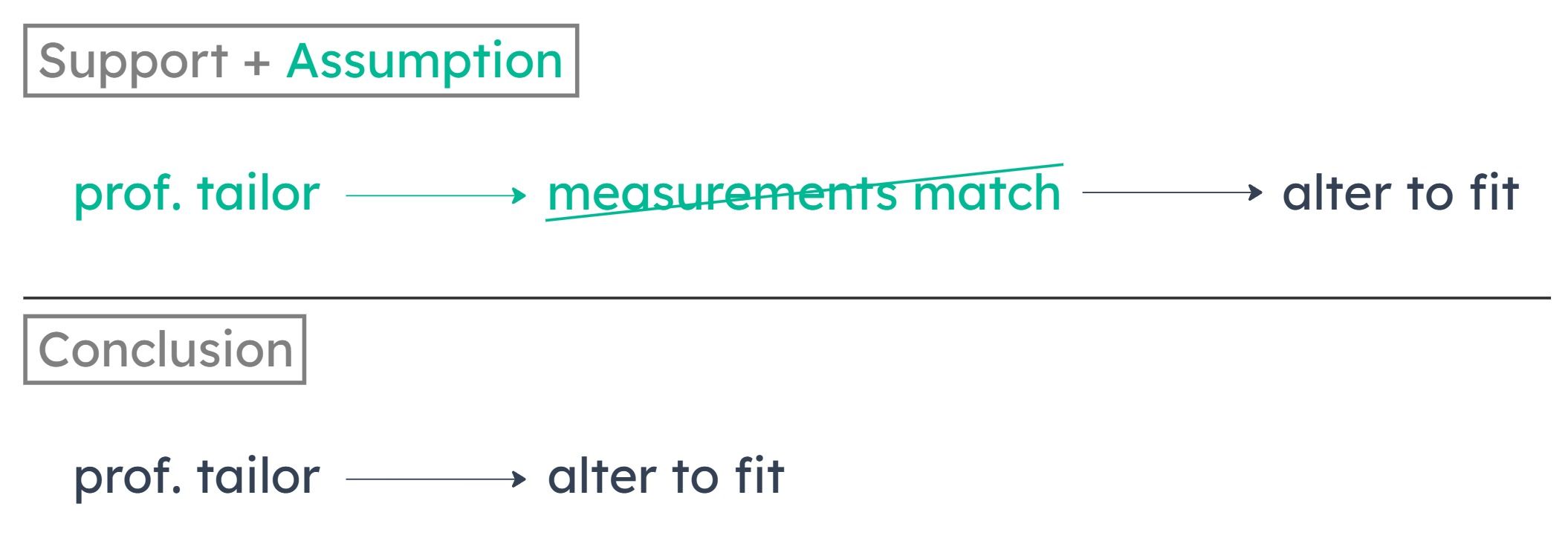LSAT 155 – Section 4 – Question 11
LSAT 155 - Section 4 - Question 11
November 2019You need a full course to see this video. Enroll now and get started in less than a minute.
Target time: 1:36
This is question data from the 7Sage LSAT Scorer. You can score your LSATs, track your results, and analyze your performance with pretty charts and vital statistics - all with a Free Account ← sign up in less than 10 seconds
| Question QuickView |
Type | Tags | Answer Choices |
Curve | Question Difficulty |
Psg/Game/S Difficulty |
Explanation |
|---|---|---|---|---|---|---|---|
| PT155 S4 Q11 |
+LR
| Sufficient assumption +SA Conditional Reasoning +CondR Link Assumption +LinkA | A
20%
156
B
25%
158
C
5%
150
D
41%
164
E
10%
156
|
156 163 171 |
+Hardest | 147.589 +SubsectionMedium |
Note that the first sentence provides no support for the conclusion.

Also, the conclusion is that professional tailors always alter the pattern, no exceptions. But the premise allows for an exception: tailors in general alter the pattern unless the wearer’s measurements already match the pattern.
The premise would lead to the conclusion if we knew that for professional tailors specifically, the exception never applies. That is, for a professional tailor, the wearer’s measurements never match the pattern.
A
Most manufactured patterns do not already accommodate the future distortion of fabrics that shrink or stretch.
B
At least some tailors who adjust patterns to the wearer and to the fabrics used are professional tailors.

C
The best tailors are those most able to alter patterns to fit the wearer exactly.
D
All professional tailors sew only for people whose measurements do not exactly match their chosen patterns.

E
A professional tailor can always estimate exactly how much a fabric will shrink or stretch.
Take PrepTest
Review Results
LSAT PrepTest 155 Explanations
Section 1 - Logical Reasoning
- Question 01
- Question 02
- Question 03
- Question 04
- Question 05
- Question 06
- Question 07
- Question 08
- Question 09
- Question 10
- Question 11
- Question 12
- Question 13
- Question 14
- Question 15
- Question 16
- Question 17
- Question 18
- Question 19
- Question 20
- Question 21
- Question 22
- Question 23
- Question 24
- Question 25
Section 2 - Logical Reasoning
- Question 01
- Question 02
- Question 03
- Question 04
- Question 05
- Question 06
- Question 07
- Question 08
- Question 09
- Question 10
- Question 11
- Question 12
- Question 13
- Question 14
- Question 15
- Question 16
- Question 17
- Question 18
- Question 19
- Question 20
- Question 21
- Question 22
- Question 23
- Question 24
- Question 25
- Question 26
Section 3 - Reading Comprehension
- Passage 1 – Passage
- Passage 1 – Questions
- Passage 2 – Passage
- Passage 2 – Questions
- Passage 3 – Passage
- Passage 3 – Questions
- Passage 4 – Passage
- Passage 4 – Questions
Leave a Reply
You must be logged in to post a comment. You can get a free account here.